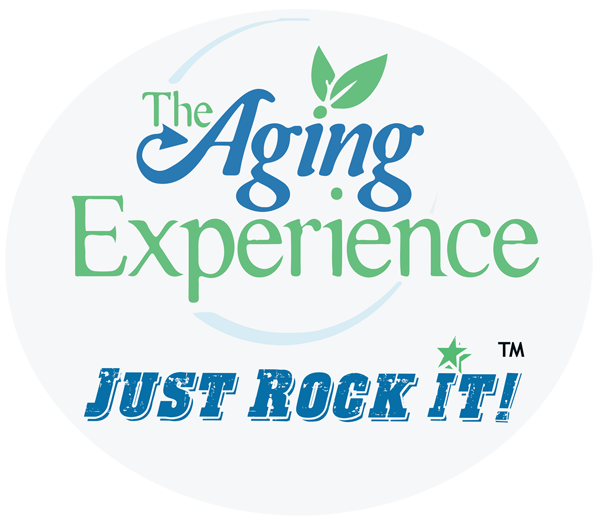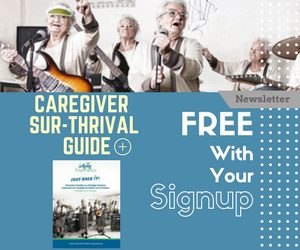The Guide to Legal Planning for Seniors
Start Early, Avoid Crisis
Growing too old to care for your own affairs is difficult to think about. It would seem that our culture today revolves around being able to independently handle ourselves throughout our lives, but the reality of the situation is that there will come a time when we are unable to do so.
Knowing this, it is important to take care of these important legal documents as early on as possible. So, what sort of legal documents do you need to worry about?
Last Wills and Living Trusts
To put it simply, a last will is a document that allocates a person’s assets and provides direction for them when the person has passed away. The document will usually always have named an executor, who will be in charge of overseeing the details and issues surround the named assets. This person is often a family member or direct descendant. For a last will to be validated, it must undergo a court process to be probated.
This process can be a long and costly one, and, because of this, many people tend to opt for the simpler, easier to execute living trust instead. A living trust typically does not have to be validated in court, allowing the owner (often called the trustor) to name others who can assume ownership of the trust after the original trustor has died, or become unable to manage it. This trust can be passed down from person to person and remain intact.
Living Wills (Healthcare Directives)
A living will is a document that describes and dictates health related wishes and instructions in the case that someone becomes too ill, or otherwise unable to communicate their wishes themselves. This form usually goes hand-in-hand with a DPOA, or Durable Power of Attorney, which we will cover in depth below. In most states, this process is a simple one, and the forms and proceedings required to achieve them are free.
Durable Power of Attorney (DPOA)
This is a legal document that gives authority over someone’s health to another party in a time of need. It has, in recent years, replaced the POA, or Power of Attorney, due to the POA’s weaknesses and shortcomings. For instance, while the POA did grant an individual the power to make medical decisions for another individual while they were in relative health, as soon as they became incapacitated or otherwise unable to speak for themselves, this document was rendered null and void.
To overcome this oversight, state legislatures began creating Durable Power of Attorneys, or DPOAs. In effect, once the person who will be in charge of the individual’s health (often called an agent) assumes the power, they become the defacto guardian for the issuer. (More on this in a moment.) Because this legal document can cover such a wide swath of legal terrain, two separate individuals can be named. One of these persons will be issued a Durable Power of Attorney for Finances (a DPOAF), and the other a Durable Power of Attorney for Healthcare (a DPOAHC) Specific restrictions can often be set for these documents, providing limitations for each individual. For instance, a DPOAF may state that the executor has rights to pay a person’s housing tax, but not sell the house outright.
Do Not Resuscitate (DNR)
This is a physician’s order that can be requested in advance to prevent a medical practice from issuing lifesaving procedures like CPR in the event of a heart attack, cardiac arrest, or respiratory arrest. This form can be filled out upon admittance to any major medical facility, or it can be verbally requested directly from your physician, who will then make a note for you.
Guardianships
If you have a loved one who is showing increasing signs of helplessness or mental deterioration, then it may be within your bounds to apply for guardianship over them. A guardian has decisionmaking abilities spanning a wide variety of categories over the individual in question, whether they are incapacitated or not. In order to obtain a guardianship, a person will need to request a court hearing over the matter.
It’s up to the court to decide whether or not the individual in question needs a guardian, and whether that guardian should have full, limited, complete, or partial say over their affairs. Typically, guardianships last for the rest of the individual’s life.
Also, nearly two thirds of all guardianships are family members to the guarded. In cases where distance is an issue, the state has the power to issue this privilege to a professional guardian, who can work with the family to meet an individual’s health and financial needs.
The National Guardianship Association declares that guardianship gives an individual the authority to:
Determine and monitor residence
● Consent to and monitor medical treatment
● Consent to and monitor non-medical services such as education and counseling
● Consent to release of confidential information
● Make end-of-life decisions
● Act as representative payee
● Maximize independence in the least restrictive manner possible
● Report to the court about the guardianship status at least annually
● Marshall and protect assets
● Obtain appraisals of property
● Protect property and assets from loss
● Receive income for the estate
● Make appropriate disbursements
● Obtain court approval prior to selling any asset
● Report to the court on estate status
A guardianship is often a more expensive and time consuming route to take for legal precedence over someone, because of the need for court hearings and other legal processes.
As our loved ones grow older, it is increasingly important to have a plan in place that not only accounts for any potential health and financial complications that may arise, but also secures a certain peace of mind for the family, knowing that said assets will be handled in a manner that is in the best interests of the family itself. An estate planning lawyer will help you with all the legal paperwork necessary, helping you and your family prepare and plan for the future.
Bullies in Senior Living
Bullies in senior living. Yes they exist. Here’s what to do about them.
Bullies in Senior Living – They Exist!
(contributed by Gloria Hoffner)
Bullies in senior retirement communities. They exist. In fact, I have heard senior living compared to being in middle school or high school.
Sherry Barzak, ACC, President of the Pennsylvania Activity Professionals Association and Vice President of the National Certification Council of Activity Professionals, is fighting back by teaching activity directors and certified therapeutic recreational directors how to calm the hostilities in their buildings. She created a staff training program on bullying because of concerns with her residents’ behaviors.
Bullying behavior might include things
- a) verbal: name calling, teasing, insults, taunts, threats, sarcasm, or pointed jokes targeting an individual b) physical: pushing, hitting, stealing or destroying property c) anti-social: excluding people, gossiping, mimicking,
Who are the bullies? they may seek to control others; they want to be powerful and controlling; they make others feel fearful; they may cause and observe conflict between people; and they lack empathy and have difficulty tolerating people who are different than them.
Staff must do more to eliminate bullying and make all residents comfortable in their home. “ They need to encourage participants to speak and listen to each other. They need to make a space for silent reflection. Offer multiple avenues for participating and learning. Help the residents appreciate the point of view, talents, and contributions of less vocal members. The residents and staff need to be held accountable and responsible for their behaviors. They need to be willing to stand up for what is right. There needs to be regular staff and resident trainings and discussions about communal living.
Bingo in the dining room: we created a culture for the dining room. As a group, residents and staff, came up with rules for the room:
1) Everyone can sit where they want.
2) Everyone has a right to come into the room.
3) Treat one another like you like to be treated.
The culture in the hallway:
1) Everyone may travel the hall when they choose.
2) Treat one another like you like to be treated.
See my Charlotte Today appearance where I talk further about this topic.
Workforce Discrimination of Caregivers

Family caregivers in the workforce. Six in 10 caregivers are employed. Caregivers are reluctant to self-identify for fear of repercussions.
Getty Images
The Discrimination Caregivers Can Face In The Workforce-Reprinted from my Huff Post 50 Blog
Call it the elephant in the closet. Family caregivers in the workforce. Six in 10 caregivers are employed while caring for a loved one. Among them, 56 percent work full time. While people between the ages of 50 and 64 represent the largest age group of caregivers, millennials make up nearly a quarter of caregivers.
Nearly one in four (22 percent) middle-aged and older workers (ages 45 to 64) — typically caring for a parent — report being family caregivers.
The “MetLife Study of Working Caregivers and Employer Health Care Costs” estimated that the average additional health cost to employers is 8 percent more for those with eldercare responsibilities. This 8 percent differential is estimated as costing U.S. employers $13.4 billion per year. Lost productivity of employee caregivers to employers is as high as $34 billion.
Employees providing eldercare were more likely to report fair or poor health in general, more likely to report depression, diabetes, hypertension, or pulmonary disease regardless of age, gender, and work type.
Employed caregivers defer preventive health screenings and are more likely to report missed days of work. Younger caregivers (ages 18 to 39) demonstrated significantly higher rates of cholesterol, hypertension, chronic obstructive pulmonary disease (COPD), depression, kidney disease, and heart disease.
Discrimination
Caregivers are reluctant to self-identify for fear of repercussions. I could tell you that none of my healthcare clients would have a clue as to how many family caregivers were in the workforce. Yet discrimination is real.
According to the Center for WorkLife Law:
Family Responsibilities Discrimination (FRD), also called caregiver discrimination, is employment discrimination against workers based on their family caregiving responsibilities. Pregnant women, mothers and fathers of young children, and employees with aging parents or sick spouses or partners may encounter FRD. They may be rejected for hire, passed over for promotion, demoted, harassed, or terminated — despite good performance — simply because their employers make personnel decisions based on stereotypical notions of how they will or should act given their family responsibilities.
An AARP Public Policy Paper describes these examples.
- An employee is fired when he asks for leave to care for his chronically ill father.
- After being told that his employer has “paid enough” for his ailing wife already, an employee is terminated when he refuses to take his wife off of the employer’s insurance plan.
- An employee is denied leave when her employer asserts that it is not her responsibility to care for her ailing mother as long as her father is still alive.
- An employee is called lazy and then fired after taking leave to care for his mother, who is near death.
Addressing the Need
I work in healthcare addressing the experience of care. One of the things I stress to clients is that a great patient experience starts with a great employee experience. Happy employees stay with the company, are more productive and motivated and create better experiences.
Instead of employees being afraid to come forward, employers need to embrace them.
They could start by finding out about ReACT (RespectACaregiver’sTime), an employer-focused coalition dedicated to addressing the challenges faced by employee caregivers and reducing the impact on the companies that employ them. ReACT represents nearly 1 million employees through its membership of more than 30 companies and non-profit organizations. If you are serious about the issues of caregiving in the workplace consider joining the coalition.
It Starts with Culture
Organizations need to build a supportive culture for caregivers who fear being stigmatized and ostracized by acknowledging their family caregiver role. Twenty-eight percent of those caring for someone report their employers are unaware of their caregiving. Cultures that succeed have top leaders heading the charge and talking about the issues.
Surprisingly, according to the Society for Human Resource Management (SHRM), there has been a steady decrease in the proportion of US employers with eldercare programs.
Innovative Program Supports Caregivers Through Video
I have developed a resource for caregivers, a 30-Day Video Caregiver Support Program. Each day family caregivers receive an inspiring video that covers one aspect of caregiving. There is a story, a moral, and a key takeaway that they can apply that day to make their life a little bit easier as a caregiver. The Program helps turn caregiving from a potentially burdensome experience to a joyful opportunity, one where you don’t just survive but thrive. View the first three videos.
What to Do if You Feel Discriminated Against
The Center for WorkLife Law has this to say:
The answer necessarily depends on the facts of the situation, the nature of the employer’s organization, and the personalities involved, so it is not possible to give a one-size-fits-all answer.
As a general rule, however, a good first step is to make sure that the employee understands the facts correctly and then, if the employee thinks it is appropriate, to ask his or her supervisor why the action that seems discriminatory was taken. The question shouldn’t be accusatory or threatening, but just a request for information.
A good second step may be to raise concerns with the employer’s HR department. Other possible steps include calling or emailing the WorkLife Law hotline, contacting an employment attorney, and contacting a local office of the Equal Employment Opportunity Commission or a state agency that addresses equal employment opportunity issues.
Want to know more? Receive a free copy of my whiite paper, Dementia Friendly as a Strategic Business Imperative for Hospitals and Health Care Providers.
Earlier on Huff/Post50:
Aging in Place in an Uber Economy – Is it Safe. How to Hire 1099 Contractors.
Aging in Place in an Uber Economy – Is it Safe. How to Hire 1099 Contractors. Reprinted from my Huff Post 50 Blog.
Ripped from the headlines –
February 22 – Kalamazoo, Mich. – an Uber taxi driver goes on a killing spree. On the same day in another city, a pedestrian struck by an Uber Driver in Connecticut is pronounced dead at hospital.

With more and more services coming into the home, hiring in an Uber economy is important. Be careful and do your homework.
November 19 – Lyft faces a wrongful death lawsuit after one of its drivers allegedly struck and killed a Miami motorcyclist.
These are but some of the stories ripped from the headlines and featured on the site Who’s Driving You. Now to be fair, that site is operated by the Taxicab, Limousine & Paratransit Association (TLPA) who is protecting their taxi workers while calling into question the background checks given to drivers of their competitors.
Here’s the thing. My fellow boomers and I all say we want to age in place. And over time to be able to do that we are going to be dependent on certain services to help us get around. And we will depend on other services to come to us in our home.
Often the people who service us are contractors for agencies. It’s what experts call the 1099 economy. 1099 contractors can be excellent but often the screening of those workers is far from it.
Consider all of the services cropping up. In my article on Senior Care at Verywell.com, I list some of these.
- UberASSIST is a new option that will allow riders needing an extra hand to request safe and reliable rides and provide additional assistance to seniors and people with disabilities. Driver-partners are specifically trained by Open Doors Organization to assist riders into vehicles and can accommodate folding wheelchairs, walkers, and scooters.
The Open Doors Organization partners nationally and internationally with associations, convention & tourism bureaus and corporations to help them better understand and serve their customers with disabilities. Services include focus group research, individualized marketing strategies, creation of training and marketing videos, guidance in ADA compliance, and the organization of workshops and symposia.- Instacart is a grocery delivery service that connects you with Personal Shoppers in your area who pick up and deliver your groceries from your favorite local stores.
- AirbNb-Millions of people including seniors, list their space and book unique accommodations anywhere in the world. My mom has a friend in Philadelphia who still lives in the three-story town home that has been in the family forever. She is only able to live on the first floor because of health reasons. She could use a service like AirbNb to find people to use the other two floors. Likely these will be young adults who can also provide social benefit for a senior. More than half of Airbnb’s hosts are older than 40, and 10 percent of them are older than 60. But just like any other rental, who is doing a background check on the tenants?
- Honor – While there are a myriad of non-medical home care companies emerging, Honor is following an Uber model, allowing people to use an app on their phone to select, schedule and monitor care from anywhere. Their value proposition is being able to better match a caregiver with a patient.
- Alfred is a weekly subscription service that handles your grocery shopping, laundry, dry cleaning and house cleaning.
- TaskRabbit automates your ability to find people to do everyday chores and errands.
I am not an HR expert but clearly HR experts are weighing in on the 1099 economy. And so are the companies that feel threatened by the Uber-type companies.
In a recent associated press article, Uber’s background checks were called into question:
Taxi advocates hit Uber the hardest saying that Uber checks fail because they do not include fingerprinting of would-be drivers. Many law enforcement experts say a fingerprint search is the most comprehensive way to check someone’s background, and taxi regulators typically require one.
To be fair there are plenty of taxi drivers who commit violent crimes.
And I would imagine Uber’s partnerships with The Open Doors Organization helps in the selection of appropriate drivers. Uber’s partnership with AARP attacks the issue from another angle – hiring more boomers and retirees as drivers. I imagine AARP would not enter lightly into something that could have major PR ramifications if things went wrong.
Since there are no consistent hiring practices among these types of services, it may fall on you and me to vet people. Here are some tips.
- Always ask for, receive and check out references. On Uber you can check your incoming driver’s rating and get a sense of who will be showing up.
- Ask your friends and neighbors who they would recommend. The best contractors are found by word of mouth.
- If you’re uncomfortable having a contractor come to your home ask a relative, friend or neighbor to be there with you.
- Make sure the contractor has their insurance current.
- Check with the state attorney general’s office and the Better Business Bureau to see if any complaints have been filed against the company placing contractors.
- Does the agency placing contractors, say home health aides, closely supervise the quality of care?
- Does the contractor provide a written document that states the rights and responsibilities of the client, and explains the company’s privacy policy and code of ethics?
- Does the agency mandate ongoing training of its employees to continually update their skills?
- Use local companies whose address you can verify.
- Avoid unlicensed contractors.
- If possible, pay by credit card. Otherwise, pay by check. Never pay cash.
I am hoping HR experts weigh in and tell us all how we can become better and safer consumers when dealing with contractors in the 1099 economy.









